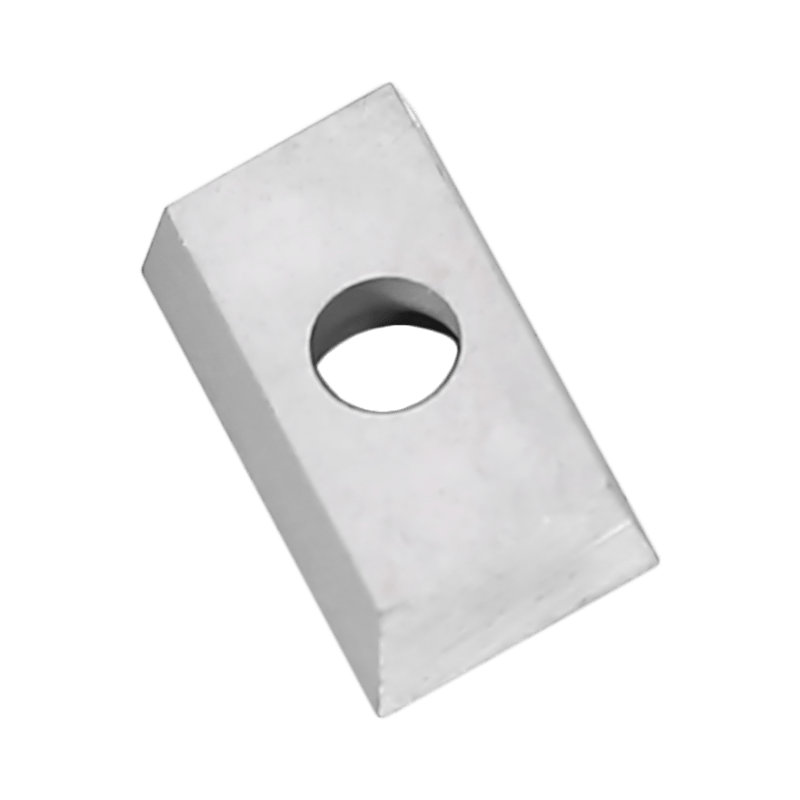2025-10-10
Modern machining often requires a comparison between different cutting solutions to determine which tool delivers greater efficiency for specific applications. When evaluating an Indexable Insert alongside a Carbide Welding Blade, many professionals focus on how these options impact tooling changes, machining efficiency, and cost over time. The Generic Triangle Shape Carbide Cutter Insert Shim provides a practical example of how insert-based solutions are applied in diverse operations such as milling, threading, and turning, while welded blades continue to hold value in certain demanding environments.
One of the central advantages of indexable inserts lies in their flexibility. The design allows operators to rotate or replace only the worn cutting edge, extending overall tool usage without requiring a complete replacement. A welded carbide blade, by contrast, is fixed in place and requires full tool replacement or regrinding once wear occurs. While welding blades can offer robustness in heavy-duty applications, they lack the modular adaptability provided by indexable inserts.

Tooling costs extend beyond the purchase price. Indexable inserts, such as the triangle-shaped carbide shim, help reduce long-term expenditure by offering multiple cutting edges within a single insert. Once an edge is worn, another can be indexed into position, maintaining consistent performance. Welding blades often incur higher costs over time due to regrinding, brazing repairs, or outright replacement. However, in certain heavy interrupted cuts or specific machining operations, the welded option can withstand shock loads better, offering an advantage despite its higher long-term upkeep.
Machining requirements vary widely depending on material. Indexable inserts show strong adaptability when cutting steel, cast iron, or non-ferrous alloys. Their geometry and grade options allow customization, making them suitable for both finishing and roughing tasks. A welded carbide blade provides strong cutting edges but is typically less adaptable, as its geometry cannot be easily changed once manufactured. This difference means that shops working across multiple materials often favor indexable solutions for their broader range of applications, while welded blades remain useful in highly specific machining conditions.
A practical benefit of indexable inserts is the reduced downtime associated with tool changes. Operators can quickly replace a worn insert without removing the entire tool holder. This is particularly useful in large-scale manufacturing environments where efficiency directly impacts productivity. In competitive manufacturing sectors, even small reductions in downtime can influence delivery schedules and production costs.
The Generic Triangle Shape Carbide Cutter Insert Shim demonstrates how indexable inserts serve in both high-precision and general machining environments. For tasks such as milling and threading, the insert maintains consistent dimensional accuracy by allowing quick edge changes without altering tool setup. This continuity in machining is harder to achieve with welded carbide blades, which may need re-adjustments after maintenance or replacement. Industries such as automotive and aerospace often prioritize this type of repeatability, ensuring stable performance across large production runs.
Carbide remains the foundation of both inserts and welding blades, offering hardness and resistance to high cutting temperatures. The difference lies in how wear is managed. Indexable inserts distribute wear across multiple edges, extending the lifespan of each unit. Welding blades must endure the entire workload on a single edge until reworked or replaced. This contrast highlights why inserts often appeal to workshops balancing long-term efficiency with consistent quality. At the same time, welded blades can still prove useful where durability against vibration and impact outweighs the need for modularity.
The decision between an indexable insert and a carbide welding blade depends on the machining environment, the type of materials processed, and the production scale.Those handling specific heavy-duty operations, where tool rigidity is more valuable than flexibility, may still choose welding blades.